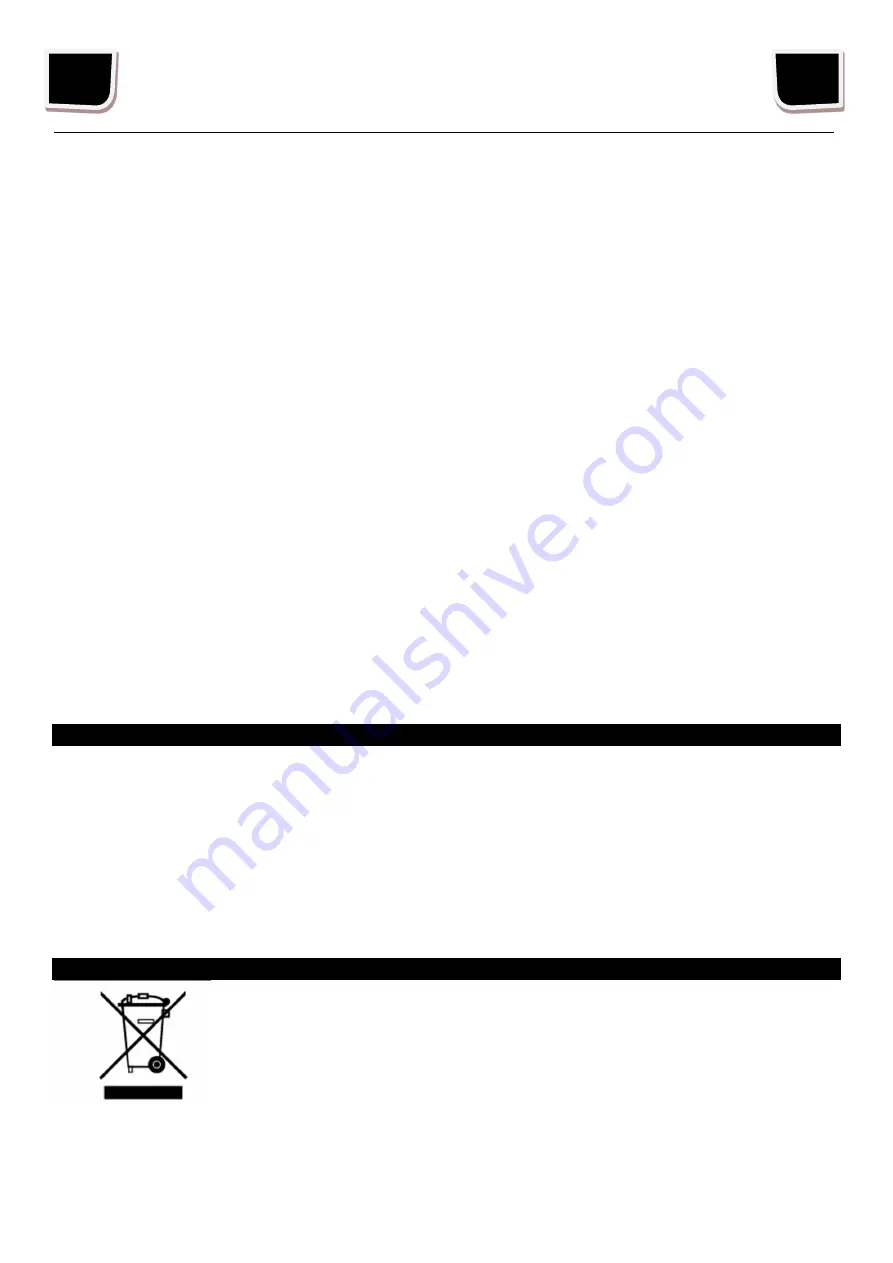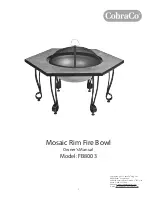
EN
2.
Connect the radiator to a suitable power source. Then turn the room thermostat knob
counterclockwise to the minimum position and set the heat output controller to the “O” Off position. The
radiator is ready for use.
3.
Turn the heat output regulator to position “I” (low output) or “II” (medium output) or “III” (full output).
4.
Turn the room thermostat knob clockwise to the maximum position. Once the temperature reaches the
desired temperature, slowly turn the room thermostat knob counterclockwise until the power indicator
goes out. To set the temperature, turn the room thermostat knob clockwise to increase the temperature or
counterclockwise to decrease the temperature. Your device will automatically turn on and off to maintain
the desired room temperature set by the room thermostat. (It usually takes 15 minutes to reach operating
temperature.
5.
To turn off the radiator, turn the heat output regulator counterclockwise to the “O” position. The power
indicator turns off.
6.
Disconnect the radiator from the power supply when not in use or left unattended.
3 LEVELS OF PROTECTION AGAINST OVERHEATING
1. Automatic thermal fuse of the thermostat
The fuse switches off the radiator in the event of overheating or failure. When the radiator temperature
drops, the fuse returns to its original state.
2. Automatic thermal fuse of the device
The fuse switches off the radiator in the event of overheating or failure. When the radiator temperature
drops, the fuse returns to its original state.
3. Thermal fuse
In the event of automatic fuses failing, the device is equipped with a thermal fuse that switches off the
device. This fuse will not automatically reset and must be replaced by a service technician.
CLEANING AND MAINTENANCE
- Before cleaning the device, disconnect it from the power supply and let it cool down.
- Dust in the device can be blown out or vacuumed.
- The protective cover of the radiator is easily soiled, so clean it regularly with a soft cloth. For very dirty parts,
use a damp cloth in soapy water, the temperature of which is less than 50 °C. Then dry the radiator guard
with a clean, dry cloth.
- Make sure that water does not get inside the appliance. Do not splash water on the radiator and never use
solvents such as benzine, isoamyl acetate, toluene, etc. to clean it.
- Keep the radiator clean, let it cool down before storing. Store in a dry, well-ventilated place.
ENVIRONMENTAL PROTECTION
To prevent damage to the device during transport, it is delivered packed in a strong
package. Most packaging materials are recyclable. Take these materials to a collection
point for recycling. Dispose of discarded devices at the store. The store will ensure
disposal in an environmentally friendly way. Discarded electrical appliances are
recyclable and must not be disposed of with household waste! Please help us to
actively conserve resources and protect the environment by taking this appliance to
a collection center (if you have this option).

































